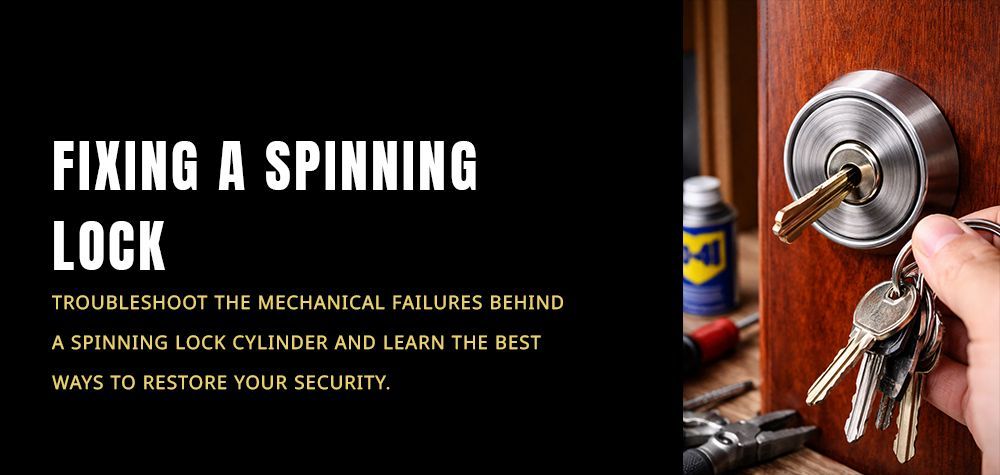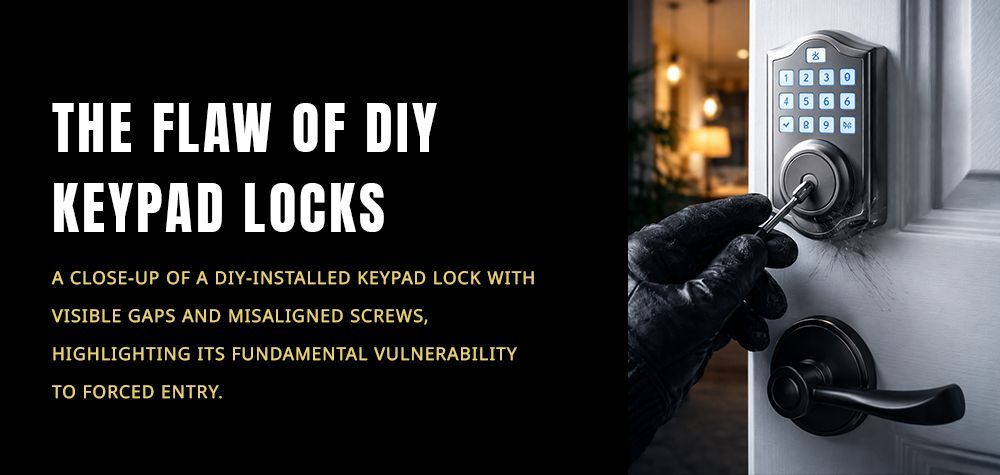11 Ways to Remove An Ignition Cylinder Without A Key
Hey there, fellow car enthusiasts! Ever found yourself in a jam when your car key goes missing or breaks off inside the ignition lock? Don't worry; you're not alone. We've all been there, and it can be quite a frustrating experience, especially when you're in a rush or far from home.
In this guide, we're diving deep into the world of ignition cylinder removal without a key. Whether you're a DIY enthusiast looking to tackle the job yourself or simply curious about how it's done, we've got you covered. From basic techniques to advanced methods, we'll walk you through everything you need to know in simple, easy-to-understand language. So, buckle up, and let's get started on this car locksmith adventure together!
Knowing How to Remove an Ignition Cylinder Without a Key
Understanding how to remove an ignition cylinder without a key can be a lifesaver in various situations. First and foremost, it's a valuable skill for anyone who wants to take control of their vehicle's maintenance or in emergency scenarios when a key is lost or broken. By knowing these techniques, you can avoid being stranded and potentially save a significant amount of money on locksmith services or towing fees.
Moreover, being knowledgeable about ignition cylinder removal enhances your overall understanding of your vehicle's mechanics. It empowers you to troubleshoot potential issues and take proactive measures to address them, fostering a sense of self-reliance and confidence in handling automotive challenges.
Additionally, knowing these methods can provide peace of mind, especially when faced with unexpected circumstances such as theft attempts or car key misplacement. It adds an extra layer of security by enabling you to regain access to your vehicle swiftly and efficiently.
How to Remove an Ignition Cylinder Without a Key
Here are 11 ways to remove an ignition cylinder without a lock:
- Disconnecting the Battery
- Removing the Steering Wheel
- Removing the Ignition Switch
- Drilling Out the Ignition Cylinder
- Removing the Ignition Cylinder
- Screwdriver and Hammer Technique
- Lock Picking
- Using a Paperclip
- The Bumping Technique
- Freeze and Hit Method
- Calling a Professional Locksmith
Disconnecting the Battery
Disconnecting the battery is often the first step in accessing the ignition cylinder without a key. By cutting off power to the vehicle, you ensure safety and prevent accidental deployment of airbags or electrical malfunctions during the removal process. This method also eliminates the risk of short circuits or damage to sensitive electronic components while working on the ignition system. However, it's crucial to follow proper procedures and safety precautions when disconnecting the battery to avoid injury or damage to the vehicle's electrical system.
Removing the Steering Wheel
Removing the steering wheel is another method used to access the ignition cylinder without a key. This technique involves disassembling the steering column to gain access to the ignition mechanism beneath the wheel. By removing the steering wheel, you can access the ignition switch and cylinder, allowing for repair or replacement as needed.
However, it's important to exercise caution and follow manufacturer guidelines when removing the steering wheel to prevent damage to the vehicle's steering system or airbag deployment. Additionally, this method may require specialized tools and expertise, so it's advisable to consult a professional if you're unsure how to proceed.
Learn more abouthow to Prevent car break-ins!
Removing the Ignition Switch
Removing the ignition switch is a crucial step in accessing the ignition cylinder without a key. The ignition switch is typically located behind the ignition lock cylinder and is responsible for activating the vehicle's electrical systems and starting the engine. To remove the ignition switch, you'll need to disconnect the wiring harnesses and any securing bolts or screws that hold it in place.
Once the ignition switch is detached, you can proceed with accessing the ignition cylinder for repair or replacement. It's essential to follow the manufacturer's instructions carefully and exercise caution to avoid damaging the vehicle's electrical components during this process. If you're unsure about removing the ignition switch, it's best to seek assistance from a qualified automotive professional.
Drilling Out the Ignition Cylinder
Drilling out the ignition cylinder is a last resort method when all other techniques fail or are not feasible. It involves using a drill to create a hole in the ignition cylinder to access the internal components and manipulate the locking mechanism. This method requires precision and caution to avoid damaging other parts of the ignition system or the vehicle itself. Before drilling, it's essential to use a center punch to create a starting point for the drill bit and ensure accuracy.
Additionally, selecting the right drill bit size is crucial to prevent damage to the surrounding components. Once the hole is drilled, specialized tools or implements can be used to turn the internal mechanisms and release the cylinder. However, drilling out the ignition cylinder may cause irreversible damage and should only be attempted by experienced individuals or professional locksmiths. It's important to weigh the risks and consider alternative methods before resorting to drilling.
Removing the Ignition Cylinder
Removing the ignition cylinder is a fundamental step in gaining access to the ignition system without a key. This method involves disassembling the ignition assembly to reach the cylinder, which houses the locking mechanism. Typically, it requires removing the steering column covers and any other components obstructing access to the ignition cylinder. Once the cylinder is exposed, various tools, such as screwdrivers or pliers, can be used to manipulate the internal components and release the cylinder from its housing.
It's essential to exercise caution and follow manufacturer instructions or a reliable guide when disassembling the ignition system to avoid causing damage. Additionally, having a basic understanding of the vehicle's ignition system architecture can aid in identifying the components and facilitating the removal process effectively. If unsure, consulting a professional locksmith or automotive technician is advisable to ensure the ignition cylinder is removed safely and without causing further complications.
Screwdriver and Hammer Technique
The screwdriver and hammer technique is a makeshift method used to force the ignition cylinder out of its housing when traditional removal methods fail or are unavailable. It involves inserting a flathead screwdriver into the key slot of the ignition cylinder and striking the screwdriver's handle with a hammer or mallet. The force generated by the impact drives the cylinder out of its housing. However, this method can be challenging and may cause damage to the ignition assembly or surrounding components if not executed carefully.
Additionally, it's essential to exercise caution to avoid injury and further complications. While this technique can be effective in certain situations, it's generally considered a last resort and should be approached with care. If unsure or uncomfortable with attempting this method, seeking assistance from a professional locksmith or automotive technician is recommended.
Lock Picking
Lock picking is a skillful technique used to manipulate the internal components of a lock to simulate the action of a key, allowing the lock to be opened without the original key. This method requires specialized tools, such as lock picks and tension wrenches, along with a deep understanding of lock mechanics. Lock pickers use these tools to manipulate the pins or other locking mechanisms within the cylinder, applying tension to the lock while carefully lifting and maneuvering the pins into the correct positions. Once all the pins are set at the shear line, the lock can be rotated, and the cylinder is free to turn, allowing the lock to be opened.
Lock picking requires patience, practice, and a keen understanding of how different types of locks function. While it's a valuable skill for locksmiths and security professionals, it's important to note that lock picking should only be performed on locks you own or have explicit permission to manipulate. Attempting to pick locks without authorization may be illegal and can result in legal consequences. Additionally, this method may not be suitable for all types of locks, particularly high-security or complex locking systems. If in doubt or unable to pick the lock successfully, seeking assistance from a qualified locksmith is advisable.

Using a Paperclip
Using a paperclip to unlock an ignition cylinder without a key is a makeshift method that requires some ingenuity and patience. To begin, straighten out a sturdy paperclip, ensuring it has a hook-like end. Insert the paperclip into the keyhole of the ignition cylinder and gently wiggle it around, applying slight pressure. The goal is to manipulate the internal pins or tumblers within the lock to mimic the action of a key. With persistence and careful maneuvering, the paperclip can potentially lift the pins to the correct positions, allowing the cylinder to turn and the lock to be opened.
However, it's essential to note that this method may not work on all types of locks, particularly those with advanced security features or intricate mechanisms. Additionally, using a paperclip for lock picking requires practice and skill, and success is not guaranteed. If unable to unlock the ignition cylinder with a paperclip or if unsure about attempting this method, it's advisable to seek assistance from a professional locksmith.
Read more about Why is my car door not opening?
The Bumping Technique
The bumping technique is a method used to unlock an ignition cylinder without a key by exploiting the mechanical properties of the lock. To employ this technique, a specialized bump key, which resembles a regular key but has specially crafted ridges, is used.
First, insert the bump key into the ignition cylinder, ensuring it is fully inserted. Then, apply slight tension to the key in the direction that would normally turn the cylinder to unlock it. With tension applied, rapidly strike the head of the bump key with a blunt object, such as a small mallet or the handle of a screwdriver. The impact causes the pins inside the lock to jump momentarily, creating a brief window of opportunity for the lock to turn freely.
The goal of the bumping technique is to align the pins within the lock temporarily, allowing the cylinder to turn and the lock to be opened. However, it's crucial to note that bumping a lock requires skill and practice, and success is not guaranteed. Additionally, this method may not work on all types of locks, particularly those with high-security features or complex mechanisms. If unsuccessful or uncomfortable attempting the bumping technique, it's recommended to seek assistance from a professional locksmith.
Freeze and Hit Method
The freeze and hit method is an unconventional yet sometimes effective approach to unlock an ignition cylinder without a key. This method capitalizes on the principle that extreme temperature changes can cause metal to contract and expand, potentially loosening the internal components of the lock.
To execute the freeze and hit method, begin by spraying a commercial freeze spray or a can of compressed air upside down directly into the keyhole of the ignition cylinder. The rapid cooling caused by the spray will cause the metal components inside the lock to contract.
After applying the freeze spray for several seconds, immediately follow up by striking the ignition cylinder with a blunt object, such as a hammer or a rubber mallet. The impact, combined with the sudden temperature change, may jostle the internal components of the lock, allowing it to turn freely.
It's important to exercise caution when using this method, as extreme temperature changes can potentially damage the ignition cylinder or surrounding components if applied excessively or improperly. Additionally, success with the freeze and hit method may vary depending on the specific circumstances and condition of the lock. If unsuccessful or if there are concerns about causing damage, it's advisable to seek assistance from a professional locksmith.
Calling a Professional Locksmith
Calling a professional locksmith is often the most reliable and efficient solution for removing an ignition cylinder without a key. Locksmiths are trained and equipped to handle a wide range of lock-related issues, including extracting broken keys, rekeying locks, and unlocking ignition cylinders.
When you call a locksmith, they will arrive equipped with specialized tools and expertise to safely and effectively address the situation. They may use techniques such as lock picking, key extraction, or disassembly of the ignition cylinder to gain access and resolve the issue.
Professional locksmiths have the skills and experience to assess the situation accurately and determine the most appropriate course of action. They can also provide valuable advice on enhancing the security of your vehicle's ignition system and recommend preventative measures to avoid similar issues in the future.
While calling a locksmith may incur a service fee, it can save time, effort, and potential damage compared to attempting DIY methods. Additionally, locksmiths often offer emergency services, ensuring prompt assistance whenever you encounter a lock-related problem.
Conclusion
In conclusion, knowing how to remove an ignition cylinder without a key can be invaluable in certain situations, such as when keys are lost, broken, or stolen. While it may seem daunting at first, there are several methods available for safely and effectively addressing this issue.
From disconnecting the battery to calling a professional locksmith, each method has its advantages and considerations. It's essential to weigh factors such as skill level, available tools, and the level of risk involved before attempting any DIY solutions.
Ultimately, the safety and security of your vehicle should be the top priority. If you're unsure or uncomfortable with any method, it's best to seek professional assistance to avoid causing further damage or compromising the integrity of your vehicle's ignition system.
By understanding these various techniques and being prepared for unforeseen circumstances, you can better protect yourself and your vehicle from potential lock-related challenges. Whether you choose to tackle the problem yourself or enlist the help of a professional, having the knowledge and resources to address ignition cylinder issues can provide peace of mind and ensure a swift resolution when needed.
Call Us Any Time!









